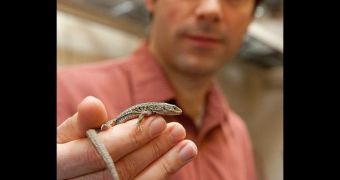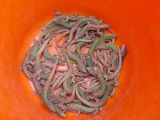The reptile extinction waves in the Greek islands over the past 15,000 years, give a very accurate response of the way that plants and animals will react to the fast global warming, due to human-caused climate change, concluded a University of Michigan ecologist.
Johannes Foufopoulos and his colleagues, wanted to better understand the consequences of climate change in the past, so they calculated the population extinction rates of 35 reptile species, including assorted lizards, snakes and turtles, from 87 Greek islands in the northeast Mediterranean Sea.
Their calculations were based on the modern-day presence or absence of the species on islands that were linked to the mainland during the last ice age.
The results showed a pattern to the island extinctions, consisting in reptile populations disappearing from the smaller islands first, due to the limited habitat choices.
Furthermore, the reptiles that needed very special conditions to survive, were the most affected, along with the northern-dwelling species that needed cool, moist conditions.
From these observations, the researchers concluded that the same will happen over the next decades and centuries, as global warming get stronger.
They also suggest that preserving habitat corridors is crucial to the survival of some species, since it should allow them to migrate in response to the warming weather, giving them some extra chances of survival.
At the end of the last ice age, the climate warmed up and sea levels rose and formed scores of Aegean islands that were formerly part of the Greek mainland.
This climate change also caused the decline of cool and moist forested areas, and turned the region in an arid place.
This transformation led to the death of many reptile populations, and it is likely to happen again, quite soon.
Over the past decades, many animals and insects have already been affected by global warming, and migrated towards cooler climates – northward in the Northern Hemisphere and southward in the Southern Hemisphere.
This phenomenon will continue in the future, since every living being will be fighting for its survival.
Foufopoulos, who is also an associate professor at the U-M School of Natural Resources and Environment and the Department of Ecology and Evolutionary Biology, said that “the widespread fragmentation of natural habitats greatly exacerbates the effects of climate change and undermines the ability of species to adapt to the new conditions.
“The lessons learned from the wave of reptile extinctions suggest that if species are to survive the global climate shift already underway, not only do humans have to set significantly more land aside for conservation, but these protected areas will also need to be connected through a network of habitat corridors that allow species migration,” he added.
The paper's co-authors, besides Foufopoulos are Anthony Ives of the University of Wisconsin and A. Marm Kilpatrick of the University of California, Santa Cruz.
The study results appear in the January edition of American Naturalist.

 14 DAY TRIAL //
14 DAY TRIAL // 

